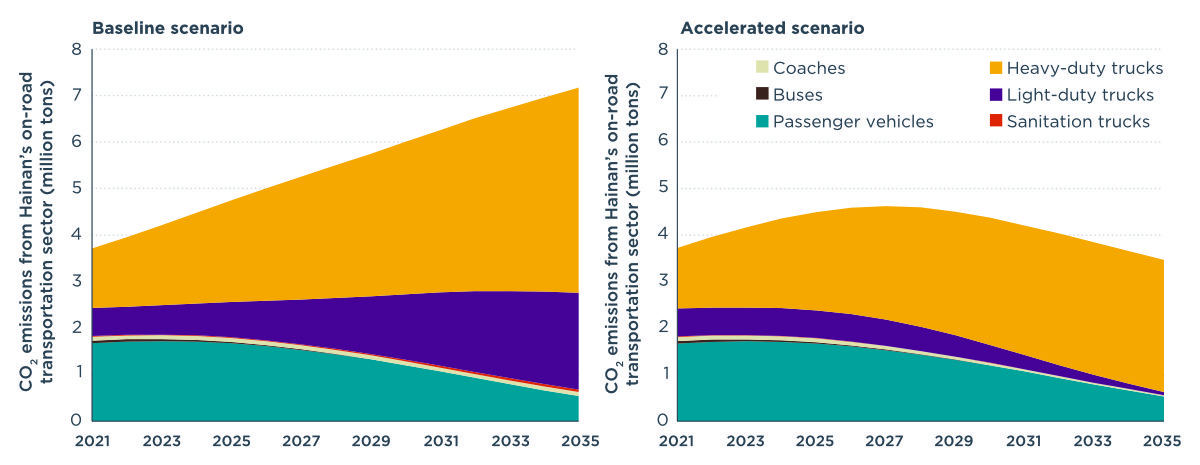Working Paper
Accelerating Hainan’s transition to new energy vehicles to hit its target for peak CO2 emissions by 2030
Two recent developments call for re-examining the transition to new energy vehicles (NEVs) in Hainan province of China beyond the ambition detailed in its March 2019 roadmap to phase out all sales of new gasoline and diesel vehicles by 2030. For one, Hainan province announced in August 2022 that it will follow China’s national strategy and aim to achieve peak CO2 emissions at the provincial level by 2030. Additionally, as NEV technologies and products have evolved in recent years, so, too, has our understanding of the performance and cost effectiveness of NEV coach and truck models. This paper evaluates the necessity of accelerating Hainan’s transition to NEVs by using ICCT’s Roadmap model to project tank-to-wheel CO2 emissions from Hainan’s on-road transportation sector through 2035 under two different scenarios. The baseline year is 2021 and all passenger vehicles, buses, coaches, and trucks are included.
Results show that Hainan’s 2019 roadmap is insufficient for achieving the 2030 goal, largely because of the slow transition of trucks. Under the Baseline scenario (left side of figure below), which mostly follows the 2019 roadmap, the emissions reductions from NEV passenger vehicles and buses are undermined by a substantial increase in truck emissions. Instead, an Accelerated scenario of NEV transition (right side of figure) would result in an early peaking of Hainan’s on-road transportation CO2 emissions in 2027, largely because of a faster transition to NEV light- and heavy-duty trucks.

Figure. Projected CO2 emissions from Hainan’s on-road vehicles from 2021 to 2035 under the Baseline scenario (left) and the Accelerated scenario (right).
Given this, the authors suggest that Hainan province officially propose NEV sales share targets for coaches and trucks by application scenario. Sanitation trucks and yard trucks are well positioned to achieve 100% NEV sales by 2025; for light trucks, tour coaches, and inter-city coaches, 100% NEV sales by 2030 is feasible. The authors also suggest that Hainan make NEVs the only preferred technology pathway and stop providing policy advantages to natural gas-powered vehicles, given their limited CO2 emissions reduction potential and the strong short-term climate impact of methane.
